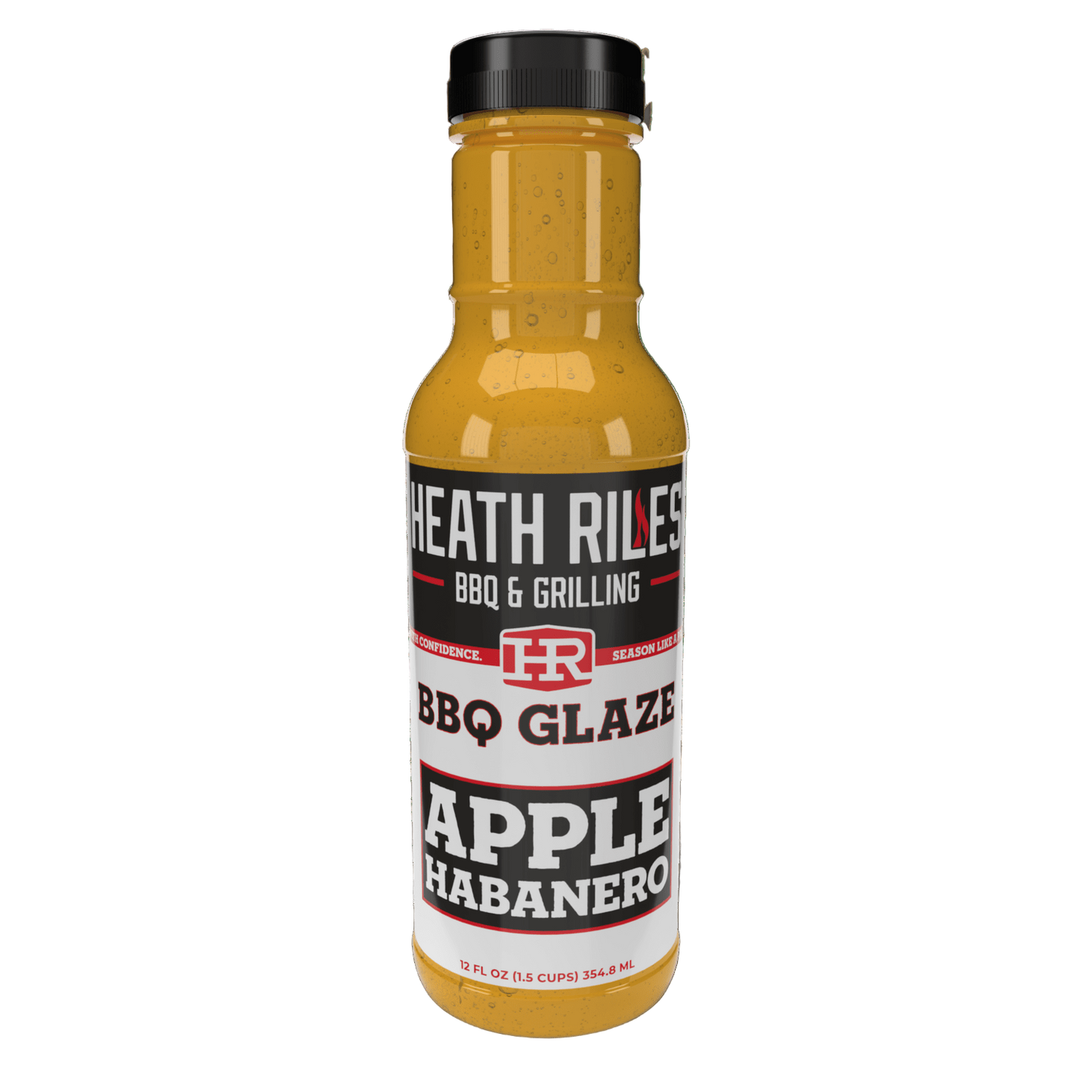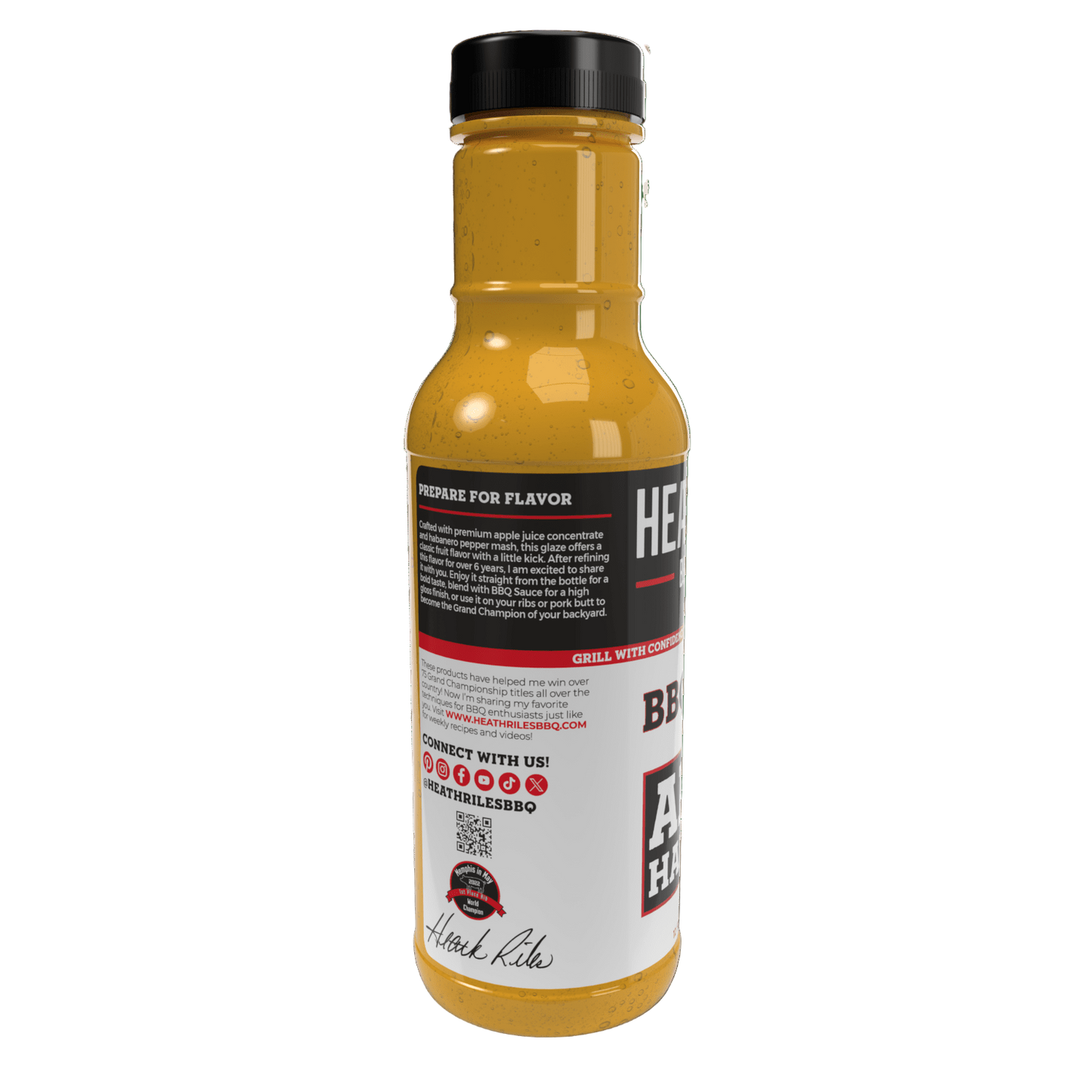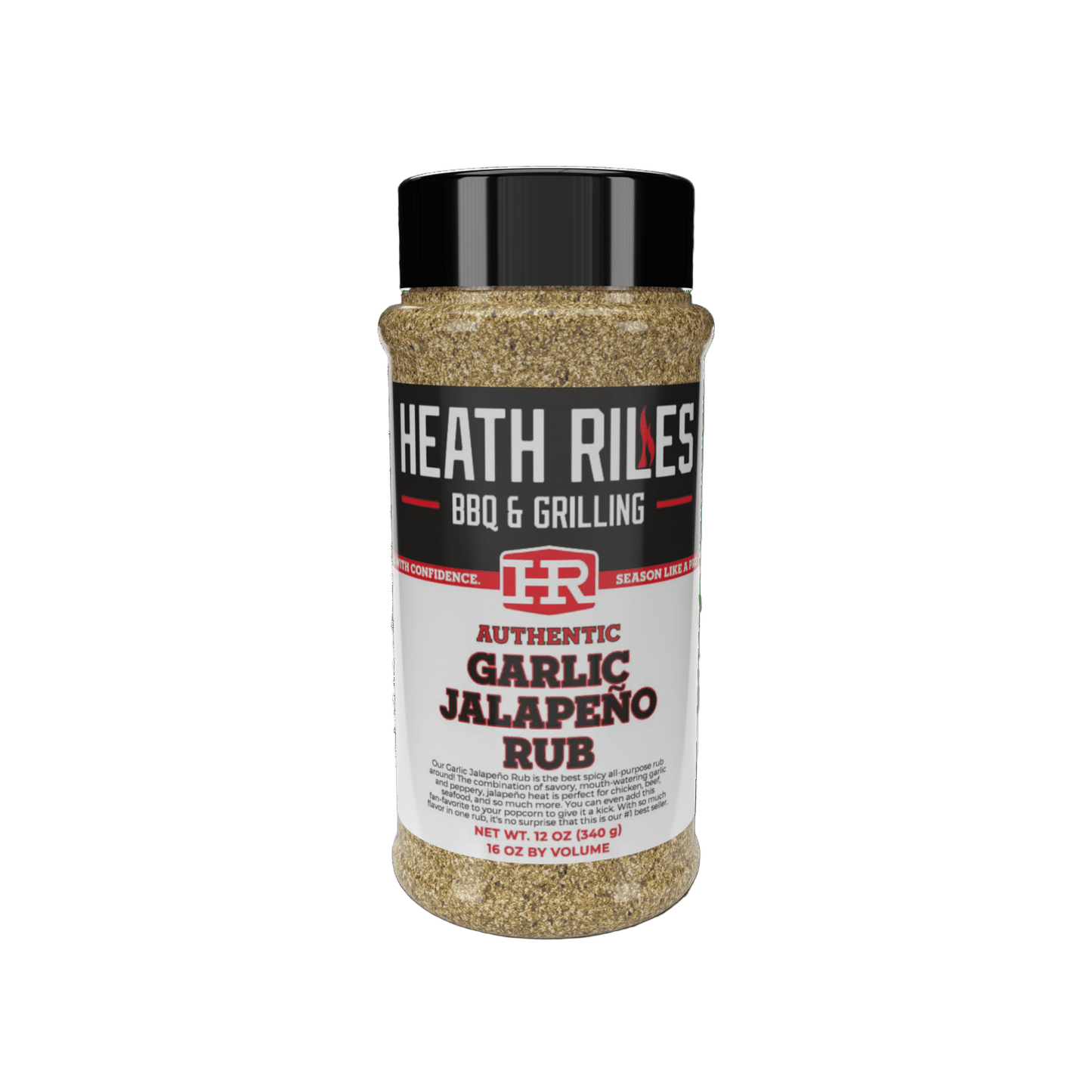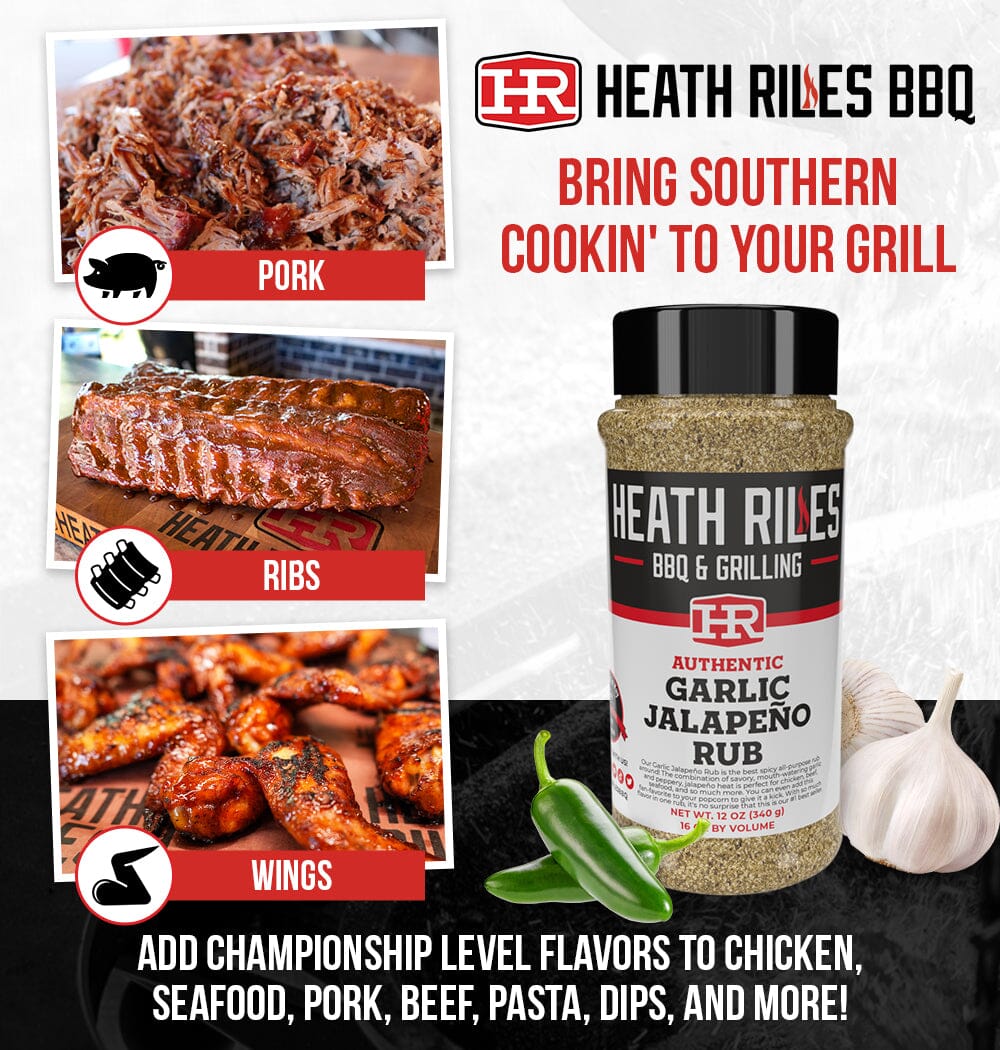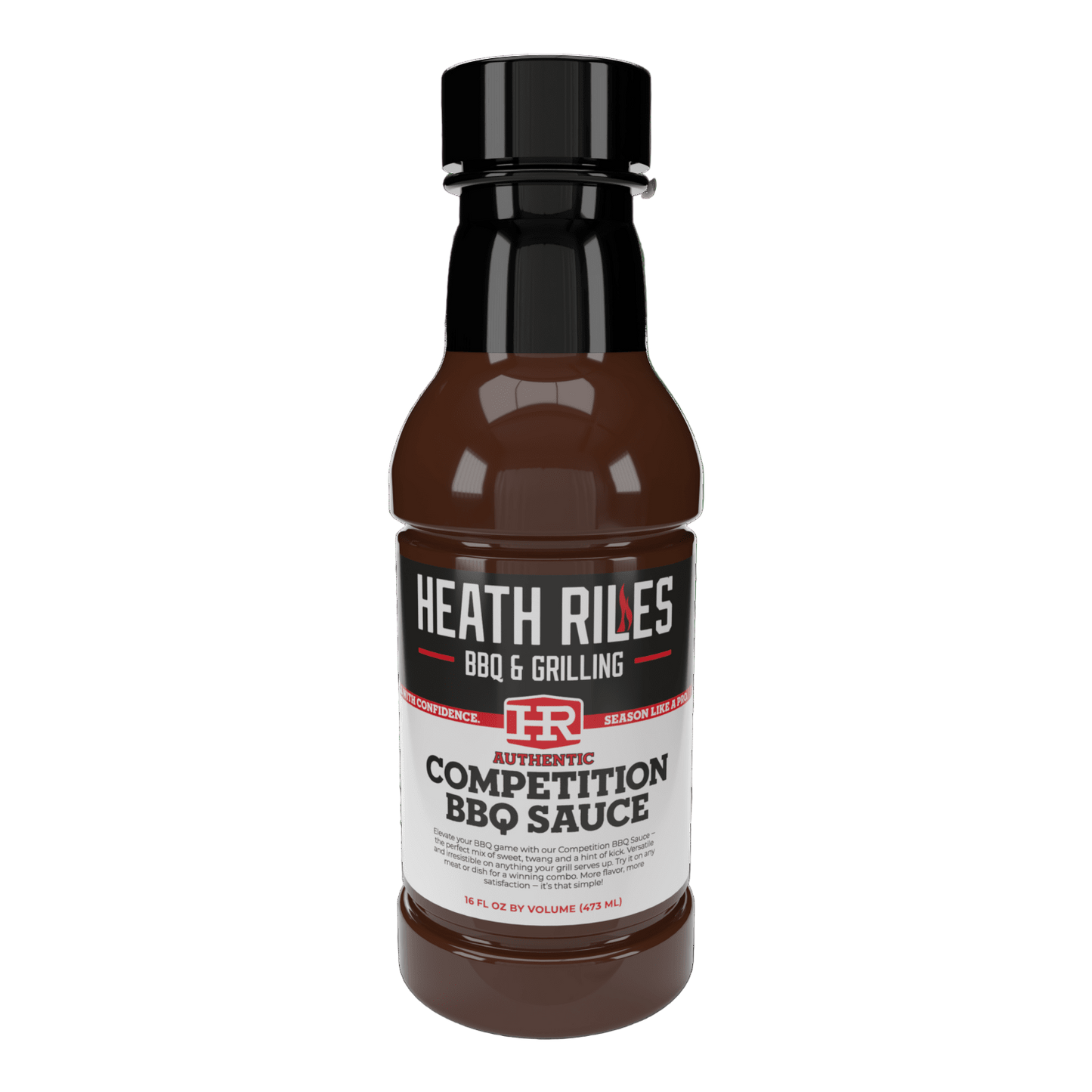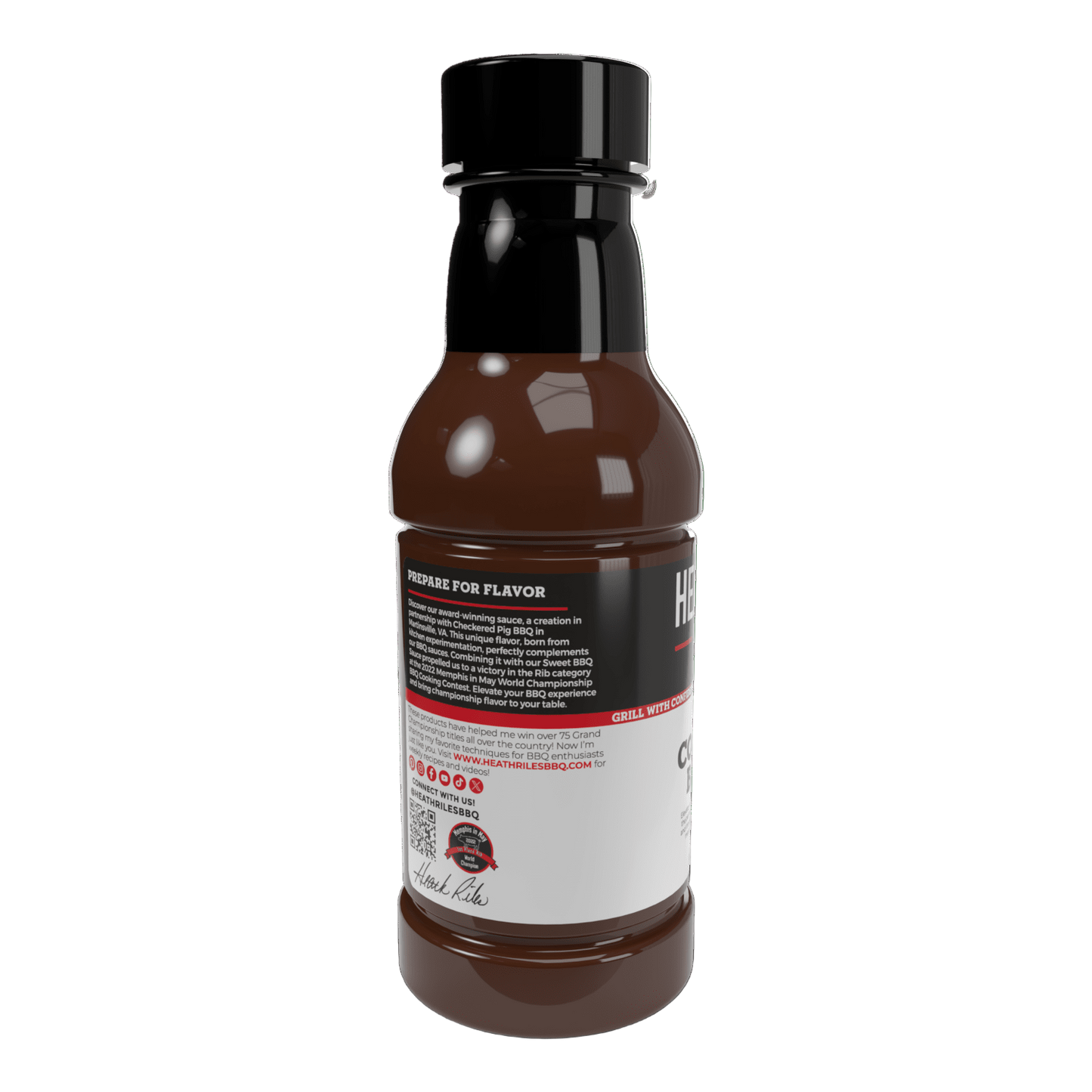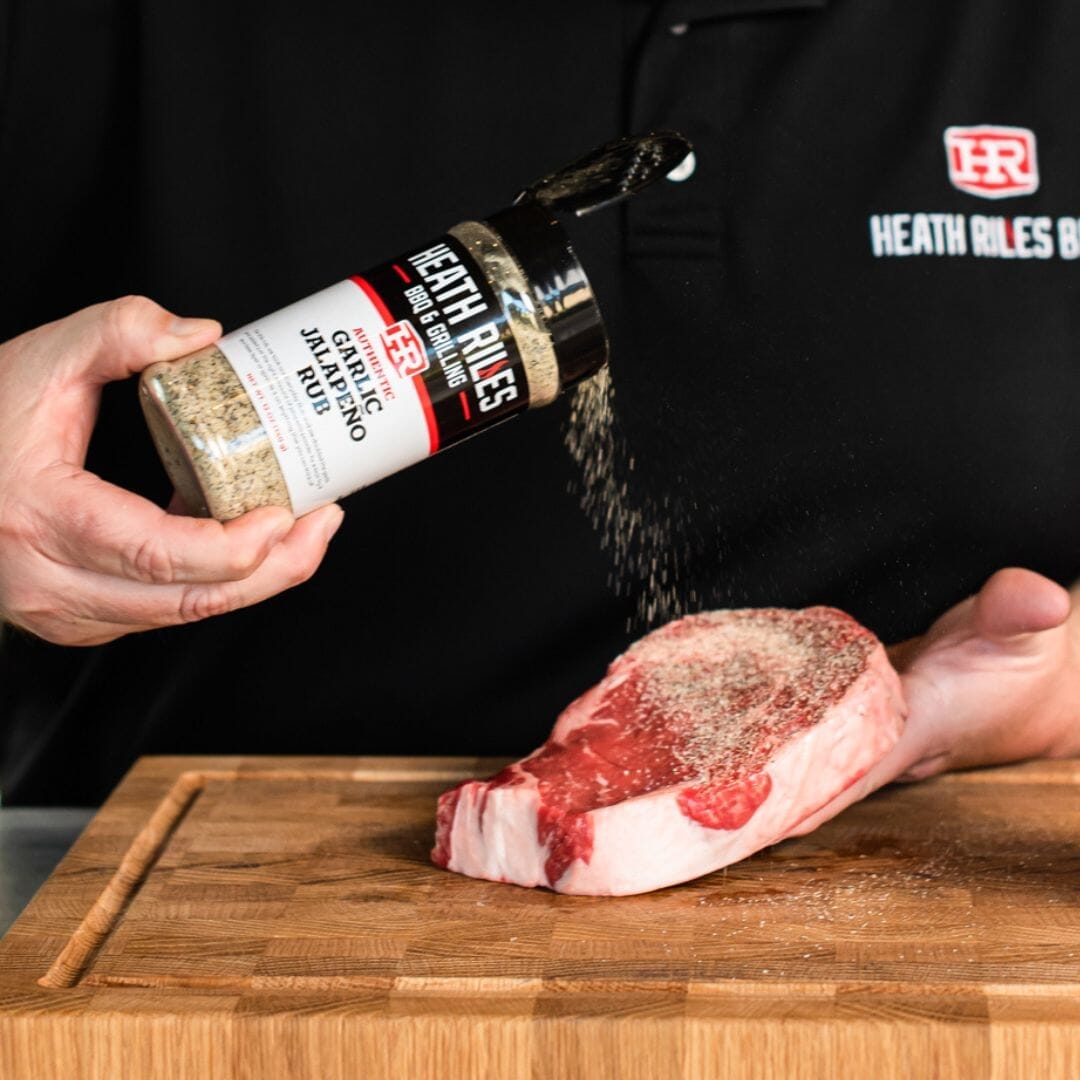
The secret to next-level barbecue isn’t just in the grill, it’s in the seasoning. Whether you’re smashing burgers, searing steaks, or smoking ribs in the oven, how you season your meat can make or break the final flavor. And nobody knows that better than Heath Riles. With decades of experience in competition BBQ and award-winning recipes to his name, Heath’s seasoning and BBQ rubs know-how brings bold flavor to backyard grills and pro pits alike.
Grilling With Heath: How to Season Meat
In this guide, Heath breaks down the essentials of how to season meat for grilling: when to do it, how much to use, and how to make every bite burst with flavor.
Get ready to learn:
- The science behind great seasoning
- Step-by-step seasoning techniques
- Best BBQ rubs for each type of meat
- Heath Riles’ personal tips for flavor-packed results
Why Seasoning Matters in Grilling
What Does Seasoning Actually Do?
Seasoning does more than just make meat taste good—it transforms it.
-
Salt draws moisture from the surface of the meat, allowing it to form a better crust and helping flavor penetrate deeper.
-
Sugar (often found in BBQ rubs) caramelizes during grilling, giving you that signature golden-brown bark.
- Spices and herbs build layers of flavor, creating complexity that balances sweet, savory, and spicy notes.
Unlike a marinade, which soaks meat in liquid, seasoning sits on the surface and interacts directly with heat, helping develop that crave-worthy crust you want in grilled food.
Common Mistakes When Seasoning Meat
Even the best meat can fall flat if seasoning is off. Here are some common pitfalls:
-
Using too much or too little: Over-seasoning can overpower the meat; under-seasoning leaves it bland.
-
Uneven application: Missed spots mean uneven flavor.
- Poor timing: Seasoning too early or late can impact how the rub or salt behaves during cooking.
- Not considering cooking method: Grilling, smoking, and searing all react differently with seasoning.
How to Season Meat for Grilling
Step-by-Step Guide
-
Start with a dry surface. Pat the meat dry with paper towels so seasoning sticks properly.
-
Use a binder if needed. A light coat of mustard or oil helps seasoning adhere, especially for ribs or pork shoulder.
-
Apply seasoning evenly. Coat all sides—top, bottom, and edges—without overloading.
-
Let it sweat. Allow the seasoned meat to rest for 10–30 minutes before cooking. This draws out natural juices and activates the rub.
How Much Seasoning Should You Use?
Use the “even, not heavy” rule. Season just enough to coat the surface without caking it on. Bigger or thicker cuts can handle more, but you’re better off building flavor in layers than dumping it all on at once.
Use your hands to gently pat in the seasoning—don’t rub it off or overwork it.
Choosing the Right Seasoning for the Right Meat
Seasoning Burgers
-
Keep it classic with salt, pepper, and garlic.
-
For deeper flavor, mix rubs like Heath Riles’ Everyday Rub directly into the ground beef before forming patties.
- If you’re cooking for a crowd, seasoning just the outside saves time and still delivers great results.
Seasoning Steaks
-
Thick cuts like ribeyes shine with a combo of coarse salt, cracked pepper, and a bold rub like Heath’s Garlic Jalapeño Rub.
- Thinner steaks benefit from a shorter seasoning window—don’t let them sit too long before hitting the grill.
Seasoning Pork and Ribs
-
For pork chops or ribs, dry rubs are king.
- Layer flavors: Start with a base rub like Honey Rub, then add a finishing rub or glaze post-cook for complexity. See the full process in Ultimate Rib Guide.
- Marinades can work, but they often mask the meat’s natural flavor compared to well-applied dry seasoning.
Heath’s Favorite Rubs & Seasoning Tips
Go-To Products
-
Garlic Jalapeño Rub: A bold, all-purpose rub with a kick.
-
Everyday Rub: A balanced blend perfect for burgers, poultry, and beef.
-
Honey Rub: The sweet, smoky profile makes it ideal for ribs and pork butts.
Expert Tips from the Pitmaster
-
Don’t be shy—bigger cuts like brisket or pork shoulder need generous seasoning.
-
Rest seasoned meat before and after cooking to maximize flavor and juiciness.
- Mix and match rubs to create your own custom flavor profiles. A balance of sweet, heat, and salt keeps things interesting.
Final Thoughts
Seasoning isn’t just a step in the process—it’s the foundation of great grilling. Start with a dry surface, season evenly, let it rest, and don’t be afraid to experiment. When you understand how seasoning works and how to pair it with different meats, you’ll elevate every cookout.
So fire up the grill, grab your favorite rubs, and let the flavor do the talking.
Looking for more rib inspiration? Check out our seasonal favorites like Apple Bourbon Glazed Ribs or Roasted Parmesan Garlic Ribs.
FAQs
Q: When should I season meat before grilling?
A: Season thin cuts right before grilling. Thicker cuts can benefit from resting 15–30 minutes after seasoning to let the flavors soak in.
Q: How much seasoning should I use on meat?
A: Enough to coat the surface evenly—think “even, not heavy.” Thicker cuts can handle more, but subtlety often wins.
Q: Should I season the inside of burger patties or just the outside?
A: For max flavor, mix seasoning into the ground meat and season the outside. Just don’t overdo the salt if mixing it in.

